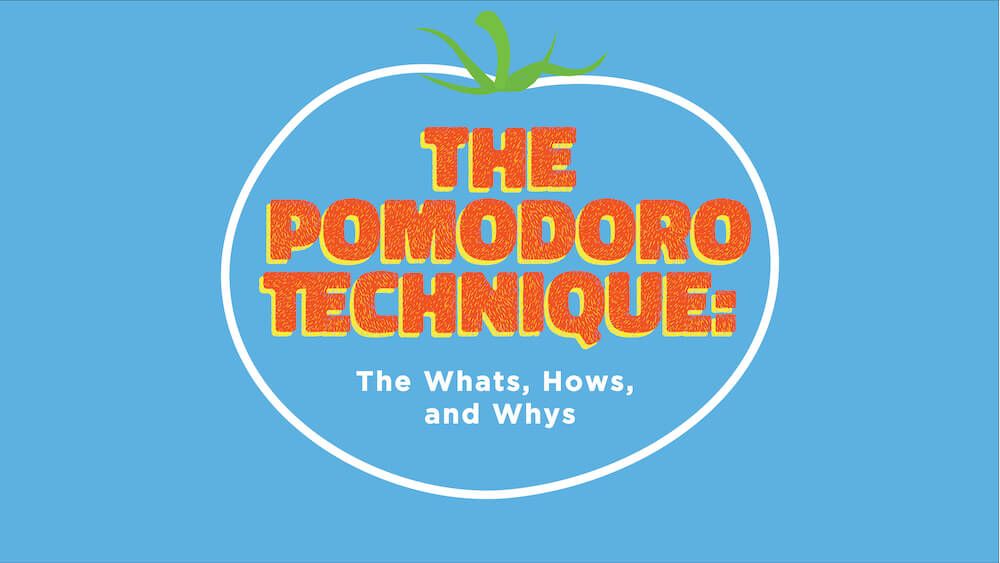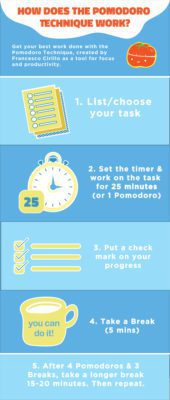The Pomodoro Technique: The Whats, Hows, and Whys

For every gadget invented to help us work productively, at least 20 things come out of the Internet rabbit hole to distract us even more.
Staying focused and exercising self-discipline can be easier said than done. How does one refrain from idle chatter or avoid looking up cat memes? Fortunately, improving your work routine is as simple as putting your mind to it. You may find yourself tempted to search for random dolphin trivia or buying a squishy toy on impulse, but try to resist and strengthen your resolve by searching for tips on productivity and motivation instead.
Or you can practice the Pomodoro Technique, a time-management system to help direct all of your attention to the task at hand.
What exactly is the Pomodoro Technique?
Developed by Francesco Cirillo in the early 90s, the Pomodoro Technique has been the favorite time-management system of busy people everywhere to help improve their focus for everyday tasks. This is in part because it encourages you to take short breaks in between productive bursts of work. And who doesn’t love taking breaks?
The technique takes its name from the pomodoro timer – which is just a good old kitchen timer shaped like a tomato (pomodoro is Italian for tomato). This timer is what Cirillo used when he created the technique as a university student. That in itself is impressive enough – how many college students do you know are actually developing techniques for studying? Perhaps procrastination, not necessity, is the real mother of all invention!
How does the Pomodoro Technique work?

All it takes to start using the Pomodoro Technique is a timer. You can use an actual pomodoro timer, an egg timer, or even the clock app on your phone!
It also helps to list down your tasks on a piece of paper, where you can later cross them out as you finish. While seeing them all laid out might be intimidating, it can also be incredibly satisfying to see how many things you’ve accomplished in a short period of time.
Upon starting a task, set the timer for 25 minutes. This 25-minute sprint is also referred to as a pomodoro.
Stay focused on that task, and work on it until the 25 minutes are up. Keep track of every pomodoro you finish by putting a check on the paper you’ve prepared for your tasks.
After a pomodoro, take a 5-minute break. You can drink some water, grab a snack, stretch out, walk around, read up on some news (hopefully something cheerful and positive), or even just catch your breath. Make sure to time your breaks, too!
After 4 pomodoros – and 3 breaks in between – take a longer break of about 15-20 minutes.
That’s basically how it goes! Start a 25-minute work session, put a check on the paper, pause for 5 minutes, then repeat until you finish a task.
What are the benefits to the Pomodoro Technique?
The Pomodoro Technique is a cyclical process. If there’s anything to gain from repetition, it’s definitely going to be a skill – in this case, a skill for focus and productivity.
Knowing that distractions are inevitable, taking short but frequent breaks can ease the pressure of work, while also setting aside time for unavoidable interruptions. With the Pomodoro Technique, you can better manage your tasks, and even schedule your coffee breaks and Buzzfeed quizzes. It has even evolved with the digital age with cool apps for both mobile and desktop use. Start with the basics, like PomoDone or Focus Booster, or go old school with any clock with a timer.
It’s almost like a mini game, where you see how much you can finish in less than half an hour!
As you learn to focus your efforts within 25 minutes, you might find yourself beating the clock, and finishing an entire task! Who knows? Maybe you’ll even start extending to 30 or even 45 minutes. Just remember that pausing in between is just as important as getting a lot of work done.
LONG STORY SHORT: if you find yourself constantly distracted during work, exerting so much effort for a task, and not making any significant progress in your projects, try the Pomodoro Technique.
Create a to-do list, start a timer for 25 minutes, work work work, then take a 5-minute break. As simple as that.